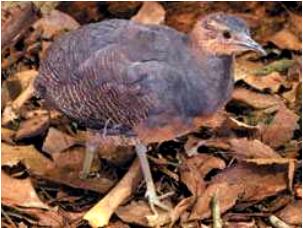
Rio de Janeiro is one of the 27 federative units of Brazil. It has the second largest economy of Brazil, with the largest being that of the state of São Paulo. The state, which has 8.2% of the Brazilian population, is responsible for 9.2% of the Brazilian GDP.

Niterói is a municipality of the state of Rio de Janeiro in the southeast region of Brazil. It lies across Guanabara Bay facing the city of Rio de Janeiro and forms part of the Rio de Janeiro Metropolitan Area. It was the state capital, as marked by its golden mural crown, from 1834 to 1894 and again from 1903 to 1975. It has an estimated population of 515,317 inhabitants (2020) and an area of 129.375 km2 (49.952 sq mi), making it the fifth most populous city in the state. It has the highest Human Development Index of the state and the seventh highest among Brazil's municipalities in 2010. Individually, it is the second municipality with the highest average monthly household income per capita in Brazil and appears in 13th place among the municipalities of the country according to social indicators related to education. The city has the nicknames of Nikiti, Nicki City and the Smile City (Cidade Sorriso).

Paubrasilia echinata is a species of flowering plant in the legume family, Fabaceae, that is endemic to the Atlantic Forest. It is a Brazilian timber tree commonly known as Pernambuco wood or brazilwood and is the national tree of Brazil. This plant has a dense, orange-red heartwood that takes a high shine, and it is the premier wood used for making bows for stringed instruments. The wood also yields a red dye called brazilin, which oxidizes to brazilein.

The State of Guanabara was a state within the Fourth Brazilian Republic from 1960 to 1964, and the Federative Republic of Brazil from 1964 to 1975. It included the city of Rio de Janeiro. The state was established in 1960, replacing the Federal District of Brazil, and existed until 1975, when it was merged with the old State of Rio de Janeiro to create a juridically new state also named State of Rio de Janeiro. Upon the merger of states, the territory of the former State of Guanabara became the municipality of Rio de Janeiro.

The yellow-legged tinamou is a species of tinamou found in wooded and shrubby habitats in tropical and subtropical eastern Brazil. This superficially quail-like bird has a grey-brown plumage and two easily separated subspecies. It has declined due to human activities, and is therefore listed as Near Threatened by the IUCN.

Itaboraí is a city in the state of Rio de Janeiro in Brazil, that belongs to the Rio de Janeiro metropolitan area. It was founded in 1672. In 2020, it had a population of 242,543.

The ochre-marked parakeet is a species of parrot native to Brazil. It is also known as blue-throated parakeet and red-eared conure in English and tiriba-grande, tiriba, cara-suja and fura-mato-grande in Portuguese. It is listed as Vulnerable (VU) on the IUCN Red List.

The brown-backed parrotlet also known as the black-backed parrotlet, the black-eared parrotlet, and Wied's parrotlet, is a small green parrot found in south-eastern Brazil from Bahia to southern São Paulo. It has a dark brown mantle and back, brown ear coverts, and red outer tail with back tips. They frequent humid forest from 500–1,000 m (1,600–3,300 ft), and are mostly found in small flocks of 3–20 birds.

Lecythis lurida is a species of woody plant in the family Lecythidaceae of the order Ericales.

The dusky-legged guan is a species of bird in the family Cracidae, the chachalacas, guans, and curassows. It is found in Uruguay, northeastern Argentina and southernmost areas of Paraguay and Brazil. In early 2021, the former subspecies P. o. bridgesi, found in southwestern Bolivia and northwestern Argentina, was elevated to species rank as Yungas guan.
Brosimum glaziovii is a species of plant in the family Moraceae.
Nectandra spicata is a species of flowering plant in the family Lauraceae.
Nectandra weddellii is a species of flowering plant in the family Lauraceae.
Phyllostemonodaphne is a monotypic genus of flowering plants in the family Lauraceae containing the single species Phyllostemonodaphne geminiflora. It is endemic to Brazil, where it is known from Espírito Santo, Minas Gerais, and the state of Rio de Janeiro. Most collections have been made near the city of Rio de Janeiro.
Terminalia januariensis is a species of plant in the Combretaceae family. It is endemic to the Atlantic Forest ecoregion, in Minas Gerais and Rio de Janeiro states of southeastern Brazil. It is threatened by habitat loss.

Greater Rio de Janeiro, officially the Rio de Janeiro Metropolitan Region is a large metropolitan area located in Rio de Janeiro state in Brazil, the second largest in Brazil and third largest in South America. It consists of 22 municipalities, including the state capital, Rio de Janeiro.
São Francisco may refer to:

The Serra das Confusões National Park is a national park in the state of Piauí, Brazil.

The Serra da Tiririca State Park is a state park in the state of Rio de Janeiro, Brazil. It protects an area of rugged terrain on the Atlantic coast with Atlantic Forest vegetation.
Colobosauroides carvalhoi is a species of lizard in the family Gymnophthalmidae. The species is native to Northeast Region, Brazil.













